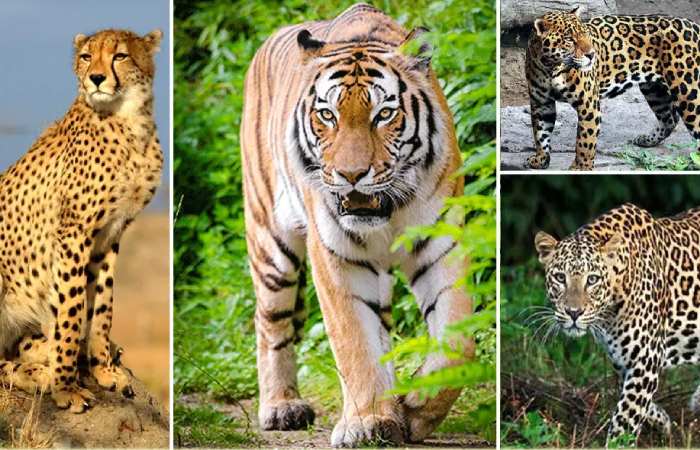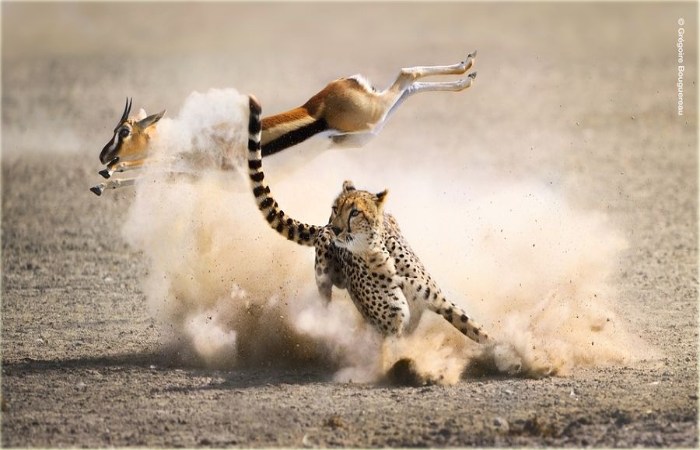Table of Contents
Introduction
Wildlife Predators is an organism that chases, hunts and eats another as its prey. Such an act is referred as Predation. Predators can be carnivores and omnivores. Lions, tigers, sharks, and snakes, all are predators. The well-known examples of predation involve carnivorous interactions, in which one animal consumes another.
Think of hyenas hunting moose, owls hunting mice, or shrews hunting worms and insects. However, obvious carnivorous interactions involve many small individuals consuming a larger one.
Such group predation is common among social carnivores such as lions, hyenas, and wolves. Not all predators are animals. Flesh-eating plants, such as the Venus fly trap and the pitcher plant, consume insects.
Predators at given times does fall prey to other large animals depending on where they descent in the food chain. E.g. a snake is a predator to a mouse, but prey to a hawk.
Predation and Adaptation:
Inherently-determined traits that improve an organism’s ability to endure and reproduce will be passed on to its descendants. Traits associated with improved predation for predators and escaping predation for prey tend to be certainly selected by natural selection.
Predators demonstrate traits such as sharp-teeth, claws, and venom that boost their ability to catch food.
They also possess tremendously acute sensory organs that help them to find potential prey. Predators captures their prey either by chasing potential prey or by ensnaring them. Creatures that pursuit their prey are capable of short bursts of speediness. Those that lie in wait tend to be camouflaged to avoid detection.
In response to predation pressures, prey species have developed various adaptations over time to increase their chances of survival. These adaptations include camouflage to blend into their surroundings, warning coloration to signal toxicity or danger, and defensive behaviors like fleeing or hiding.
Some prey species have evolved physical structures like shells, spines, or armor for protection. Wildlife Predators, in turn, have also developed adaptations such as keen senses, speed, and specialized hunting techniques. Diverse and fascinating adaptations in the natural world has been led by the evolutionary arms race between predators and preys.
Characteristics of Predators

Predators exhibit a range of characteristics and adaptations that aid them to competently and efficiently secure food resources:
- Sharp teeth, claws, and venom: Predators often have sharp teeth, claws, or venom to help them catch and kill their prey. For example, lions have sharp claws and teeth to tear apart their prey, while rattlesnakes have venom that can paralyze and kill their prey.
- Acute senses: Predators often have acute senses of sight, hearing, or smell to help them find their prey. For example, hawks have excellent eyesight to spot small prey from high up in the sky, while bats use echolocation to navigate and find food in the dark.
- Speed and Agility: Many predators are fast and agile, allowing them to chase down or ambush their prey effectively. This speed can be crucial for successful hunting.
- Hunting Strategies: Predators employ various hunting strategies, such as stalking, ambushing, or pursuing prey in groups to increase their chances of success.
- Camouflage: Some predators use camouflage to help them merge in with their surroundings and surprise their prey. For example, the snow leopard has a white coat that helps it blend in with the snow, while the chameleon can change its color to match its surroundings.
- Social behavior: Some predators hunt in packs or groups, while others are solitary hunters. For example, wolves hunt in packs, while lions are solitary hunters.
- Opportunistic Feeding: Some Wildlife Predators are opportunistic, adapting their diet to whatever prey is available, allowing them to thrive in diverse ecosystems.
- Territory: Wildlife Predators often establish and defend territories to ensure a consistent supply of prey within their range.
- Intelligence: Some predators are very intelligent and use strategies to catch their prey. For example, dolphins use echolocation to find fish, while crows use tools to help them get food.
Predators perform a vital role in ecosystem dynamics by varying prey populations and promoting biodiversity. Their diverse characteristics and adaptations are a testament to the complexity and diversity of life in the natural world.
Types of Predators

Predators can fall under different categories, few of them are as follows:
- Carnivores: Wildlife Predators are the ones who kills and eat their prey. Which includes large animals such as the lion and tiger.
- Herbivores: These include animals such as cows, buffaloes, goats, sheep, and deer, that consume plants and plant products.
- Omnivores: These predators eat both plants and animals. Some examples of omnivores include bears, foxes, raccoons, and skunks.
- Parasites: These predators live in the body of the host and derive nutrients from its body for survival and reproduction. In this, the host suffers a loss of energy but is not always killed.
- Aquatic Predators: Many aquatic animals are predators, including sharks, dolphins, crocodiles, and killer whales. These animals have adapted to hunting in water environments.
- Apex Predators: are the predators which are at the top of the food chain and have few or no natural predators themselves. They often play a crucial role in regulating ecosystem populations. Examples include tigers, polar bears, and orcas.
Conclusion
In this content I wanted to share the knowledge about Wildlife Predators and how predators play an significant role in the ecosystem by controlling the population of prey animals. They also help to keep the ecosystem healthy by preventing the spread of disease. However, predators can also pose a threat to humans and other animals. It is important to be aware of the risks posed by predators and to take precautions to stay safe. Hoping this content has come handy for all the blog readers and stay updated with the site for more contents on various things.
